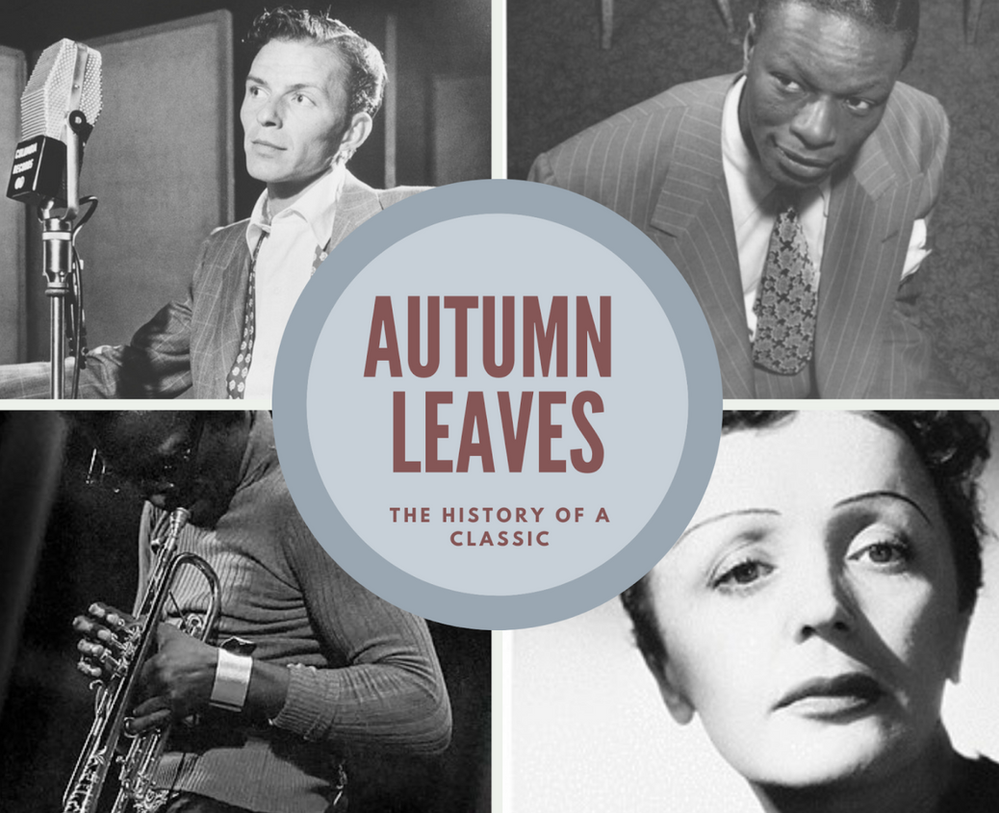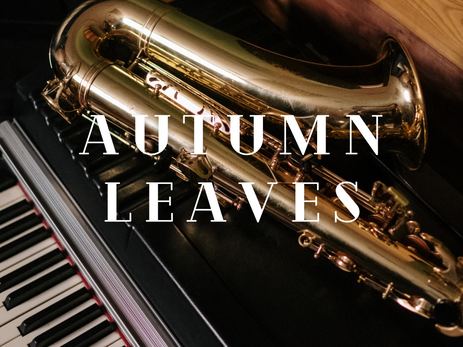Uncategorized
Autumn Leaves – A Classic Of All Times
Autumn Leaves – A Classic Of All Times
This is one of the songs that everyone has heard of. But do you truly know the history and the ins and outs of this famous track?

Autumn Leaves – A Classic Of All Times
who wrote autumn leaves
Autumn Leaves Song:
“Autumn leaves” is a popular jazz track that was written back in 1945 by Jacques Prévert, Joseph Kosma and translated by Johnny Mercer.
Who wrote the “Autumn Leaves” original song? It was written in French and was called “Les Feuilles Mortes”, which translates to “Dead leaves”. It was a dark yet passionate track surrounding loss, love and regret, whereas the English version, whilst touching on the same theme, was more gentle and wistful.
The song was ignited in 1945 originally, like a poem. It was written by screenwriter Jacques Prévert as part of the script for a ballet called “Le Rendezvous”. However, the ballet flopped but the lead actor still took a liking to the song and added it to his concert repertoire.
At first, it was not accepted warmly: there was no beat, and an over-complicated structure; it had everything going against it. However, Montand kept it in his repertoire and within a few years, it became his biggest hit and most requested song. In 1950, when the song was translated into English, only a small part of the opening verse survived. Mostly, it became about featuring the catchy, 16-bar refrain.
Brief Analysis Of The Song
“Autumn Leaves” remains a popular choice for beginner jazz players, as the chord progression remains within the circle of fifths. Voice leading is relatively standard, though just before the end, chromatically descending chords may pose some challenges to performers.
The song is in G minor although the chorus is in Bflat major, which is interesting for a jazz song. It holds an AABC form as the last eight bars are not the same as the first eight bars. The harmony consists of mainly ii–V–I and ii–V sequences which are typical of jazz. The ‘A’ sections are made up of an ii-V-I major chordal progression. Then, is followed by an ii-V-i in the relative minor key.
The ‘B’ section is almost identical, apart from the fact that it starts as a minor and then moves into the major. The ‘C’ section adds a bit more excitement into the track as it modulates to the key of IV through a step-down progression, before making its way right back to the minor, making it pretty simple to improvise over.
Famous Artists Who Played It
Jo Stafford (a pop vocalist) was the first to record “Autumn Leaves” and Édith Piaf sang the English and French versions on a radio program during Christmas Eve of 1950. However, the song didn’t become a hit until pianist Roger Williams recorded it in 1955.
Williams sold over a million copies and bargained a No. 1 hit with his arpeggio-heavy version, which became the first and only piano instrumental to top the Billboard pop charts. Williams and Mercer both claim to have made more money from “Autumn Leaves” than any other song in their catalogue, which is surprising as it took a lot longer than other songs to become popular. The song was also added to Paul McCartney’s fortune as well; his MPL Communications (which is his own music publisher) controls its publishing rights.
https://www.youtube.com/watch?v=n2s2tPORlW4
As one of the most covered jazz tracks of all time, many artists have recorded many versions of “Autumn Leaves,” including Frank Sinatra and Bing Crosby. Most notably, Nat King Cole transformed it into a hit, and also recorded versions in French and Japanese.
https://www.youtube.com/watch?v=TrG6AAPPujQhttps://www.youtube.com/watch?v=Gnp58oepHUQ
Following Williams’ piano recording, artists including Steve Allen, Mitch Miller, the Ray Charles Singers, Jackie Gleason, and Victor Young made renditions of the song, establishing it as a jazz standard.
Miles Davis also played “Autumn Leaves” as part of his musical repertoire from 1960 until 1966. Davis was never able to record the tune in a studio, he would only play it live although several concerts would get recorded and released by Columbia. The first concert recordings of the song played by the Miles Davis Quintet are from the ’60s.
https://www.youtube.com/watch?v=rsz6TE6t7-A
The Instrumental Version That Topped The Billboard Charts
In 1955, as I briefly mentioned above, the famous pianist Roger Williams recorded “Autumn Leaves” It became the first piano instrumental to reach #1 on Billboard’s popular music chart. This version was known for Williams’ descending scales and arpeggios, which cleverly depicted the falling leaves from the trees entering the ground. It surprisingly outsold the 1956 version of a piano instrumental with Ray Turner backed by orchestration and conducting by Victor Young.
https://www.youtube.com/watch?v=YiUWK8HK1bA
After Williams was signed to Kapp Records in the early 1950s, label president Dave Kapp asked him if he would like to record “Autumn Leaves” with him the following Monday. He didn’t even know the title but stayed up to work on the arrangement so that it sounded like leaves falling onto the ground. The song sounds a little faster than usual in these recordings as during Williams’ first recording run-through ran slightly over three minutes, so Kapp asked him to speed it up because “Disc jockeys at the time wouldn’t play a song longer than that length”, Williams often said. However, the main memory of him recording the song was just that it paid the rent. It is clear that after that recording the song paid for so much more than that.
Without a doubt, “Autumn Leaves” will continue to be played in all parts of the world, whether on the radio, via the internet or performed live by jazz bands.
Autumn Leaves – A Classic Of All Times by WKMT Team.
START YOUR FACE TO FACE OR ONLINE PIANO LESSONS WITH US
Learn jazz with WKMT London.

